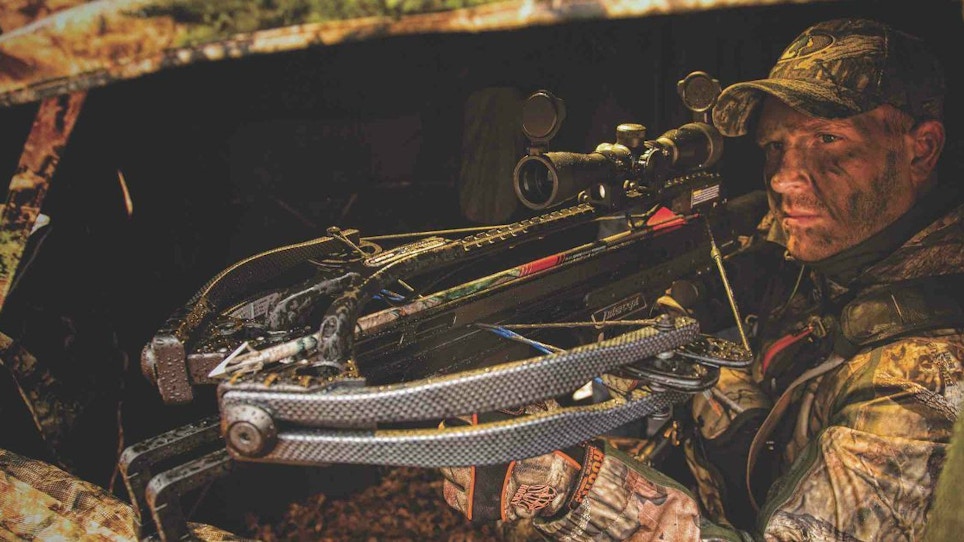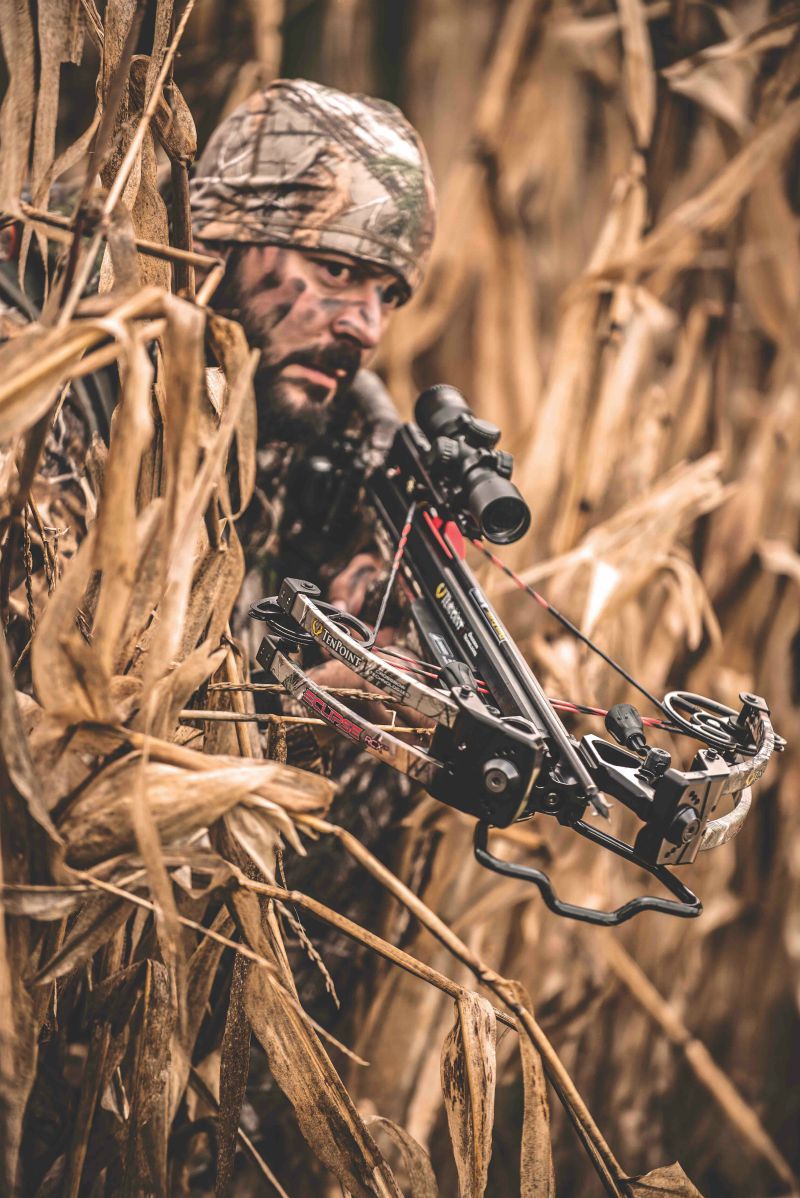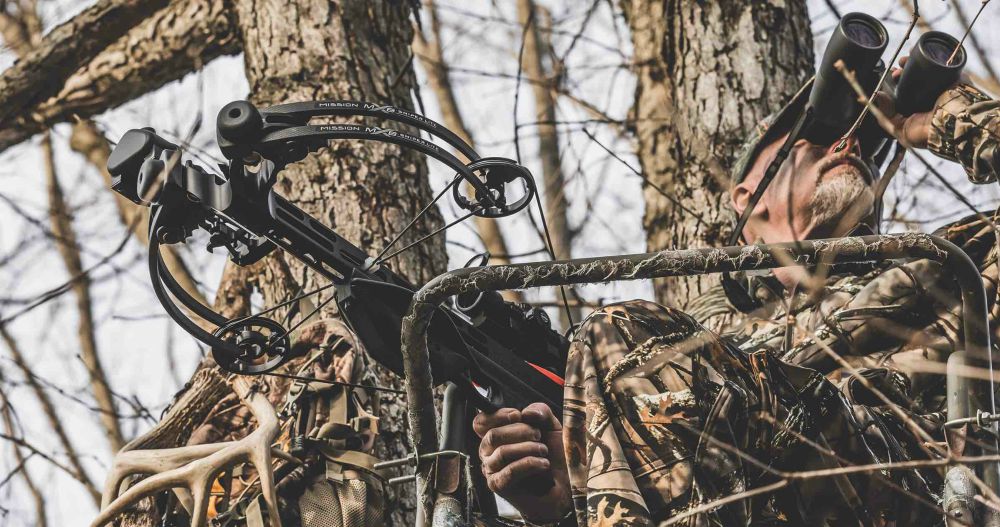You wait all year for the whitetail rut to kick in, as the circle of life in the deer world brings the big bucks out of their solitary lifestyle. You’ve done your scouting and know where the does are feeding, which will naturally draw the bucks. Your trail cameras have captured some trophy-class antlers that increase your heart rate. When you think everything is lining up for your best season ever, ask yourself: What else can I do to boost my odds for success?
Hunting with a crossbow is fun and challenging. There are pros and cons to the horizontal bow, and the savvy hunter will embrace the pros and counterbalance the cons. Like counting cards at a blackjack table or getting a hot tip to invest in the stock market, the thrill of increasing your odds can be carried over to your next crossbow hunt.
What can you do to be more successful with a crossbow when hunting deer? Vertical archers often accuse crossbow enthusiasts of having a huge advantage, as you don’t have to draw the bow when an animal shows up. However, holding a crossbow level to your shoulder for more than a minute removes any advantage that might have existed. The weight of the bow will cause fatigue in your arms and hands, making it nearly impossible to hold your crosshair on a target. The last thing you want is a crosshair wavering across the vitals covering a 12-inch diameter circle. Aim small, miss small and challenge yourself to pick out a hair to focus on in order to put your arrow in the exact spot for a quick kill.
1. Take a Rest
The best way to address the fatigue while holding a crossbow level to your shoulder is to always use a rest. Shooting sticks are easy to set up in a blind, but function just as well in a treestand. The Primos Trigger Stick has large rubber feet that can be used on most stand footrests. A monopod doesn’t offer the same stability for the crossbow, but is better than just going handheld.
A good trick for a monopod is to place it into your boot and slide it down your leg as far as possible. You can use your foot to point at your target, moving your rest in unison with your bow.
TenPoint makes a SteddyEddy, which fastens to the sling swivel of the bow. This monopod design allows you to sit on the base of the steady stick to hold your bow completely still. You can also tuck it into your boot or use it on the ground like any other rest.
2. Bet on Blind Luck
There are several different ground blinds on the market, and most are designed for firearm and vertical bowhunters. The specialized blinds for archery are usually configured for vertical bows, but several manufacturers are catering to crossbow hunters with specific blinds. Crossbow blinds help ensure horizontal limb clearance at steep angles. The shooting ports are at the perfect height for a crossbow hunter sitting in the blind.
Whatever blind you choose, make sure it accommodates crossbow limbs and is big enough for rotation and field-of-view with the crossbow stock mounted to your shoulder.
3. Take a Seat
Whether you prefer to hunt from a treestand or blind, sitting provides support for your body and limbs. Most hunters take a seat when shooting off a benchrest to sight-in or practice with a crossbow, so why not when hunting? When sitting, you also reduce environmental factors such as wind. Your body is more compact and less visible, helping ensure you won’t be detected by game. Being able to shoot from the sitting position is a pro that crossbow hunters should embrace. Combined with a rest, you can shoot as accurately while hunting as you do at the range.
4. Test Trajectory
The flight of a bolt launched off the rail of a crossbow has a significant arc in flight. The short, heavy bolts are great for capturing and transferring energy, but fighting the gravitational pull of the earth is a losing battle. Practice is the best way to know your bolt’s path and the amount of clearance it needs in flight to your target. The arc is much greater at 50 yards than at 20, and knowing exactly how much clearance you need will make sure your bolt finds its mark when you pull the trigger.
There is nothing worse than finding a big buck in your scope, squeezing the trigger and having your bolt hit an overhanging limb or even a part of your blind. Through careful planning, you can define your shooting lanes with enough clearance for bolt flight to your maximum hunting distance.
Use a rangefinder to determine distance to features in your shooting lane that are easy reference points. Not having to lift and operate a rangefinder when a deer is closing in is a huge advantage. Take a target along when you set up your blind or stand and then shoot your lanes to provide confidence and ensure you aren’t bitten by the crossbow trajectory con.
5. Light It Up
Illuminated nocks help you see where your bolt penetrates an animal. Knowing where your bolt entered an animal allows you to decide if that animal needs time to expire before tracking or if the shot resulted in a quick and clean kill. Illuminated nocks can help find game when the bolt stays in the animal, too. If all else fails, you can sweep the woods as the sun sets and you might see the glowing nock from a long distance.
The bright idea of a lit nock also helps recover bolts that have passed through an animal.
6. Reduce Size and Weight
Reduce the size and weight of your crossbow by removing the quiver when hunting. It might seem like a small thing, but your quiver is one more item that can catch on blinds, limbs, ladder stand railings or other unforeseen hazards. Quivers also catch wind, making aiming difficult. Besides reducing the size, weight and snagging hazards, the biggest benefit derived from removing the quiver is reducing the vibration and noise of your bow. Every component on your crossbow vibrates to generate noise. The more compact and simple you keep your crossbow, the quieter it will be for deer hunting.
Pack a hanging bracket or keep your quiver in your pack for easy access to bolts, but don’t leave them attached to your crossbow.
It is easy to embrace the positive features of a crossbow, but don’t be afraid to maximize the benefit. By identifying any potential drawbacks, you can usually overcome challenges to increase your odds of success. Make a mental checklist the next time you venture out after that buck of your dreams and turn that dream into reality.
What’s New in Whitetails:
GROUND STALKING WHITETAIL DEER
TOP 3 REASONS TO CARRY A CROSSBOW ON PUBLIC LAND








